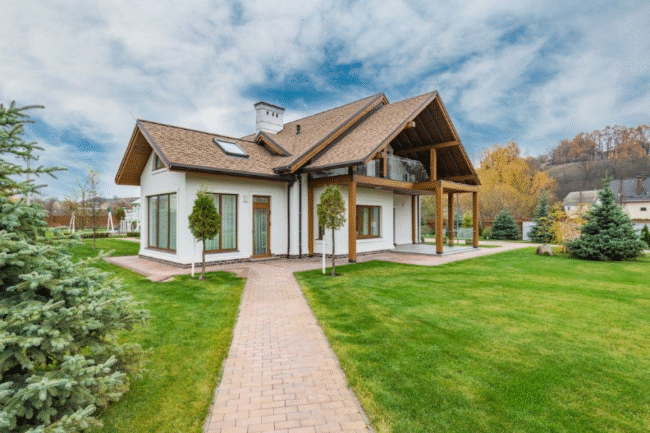
Atlanta homeowners face unique challenges when it comes to home maintenance. With the city’s mix of older properties, humid summers, and frequent storms, even small signs of damage can point to deeper issues. Some houses were built decades ago and may not have had regular structural updates. Others deal with problems tied to shifting soil, tree root growth, or heavy rainfall.
In a climate like Atlanta’s, water damage and moisture buildup happen fast. Roofs, basements, and crawlspaces are all vulnerable during long rainy seasons. Heat and humidity also wear down materials faster, which makes it important to check for early signs of damage throughout the year.
Ignoring small structural issues may seem harmless, but it can lead to major problems over time. What starts as a faint crack, a warped door, or a discolored ceiling might grow into a serious repair job. Catching signs early keeps costs lower and protects your home’s stability.
Roof Damage and Ceiling Stains
The roof is one of the most common areas where structural wear starts to show. It protects the entire home from the elements, so when it breaks down, the damage spreads fast. Signs of trouble include curled or missing shingles, sagging gutters, and dark stains on ceilings or upper walls. Moss or plant growth on the roof can also be a warning sign, especially in damp areas.
Ceiling stains are often caused by small leaks that go unnoticed for months. These leaks may come from around skylights, chimneys, or flashing areas. If left alone, they can soak insulation, weaken wooden framing, and lead to mold growth. The result isn’t just a cosmetic issue; it can compromise the entire roof system.
This is why it’s smart to work with professionals who understand the local climate. When signs like these appear, many homeowners begin by searching local Atlanta roofers near me online to find someone with the right experience. Local roofers know how the city’s heat, moisture, and frequent storms affect different roofing materials. They also know what to look for when inspecting homes in older neighborhoods or high-tree zones.
Sometimes, a quick patch or replacement of a few shingles can solve the problem. Other times, deeper issues like rotting decking or water intrusion require more attention. Either way, a timely inspection helps avoid bigger costs and limits further structural wear.
Once roof issues are ruled out or fixed, it’s easier to focus on other signs of wear that may be developing elsewhere in the home.
Cracks in Walls and Ceilings
Cracks are often the first visible sign that something is shifting beneath the surface. While small hairline cracks in paint or drywall may not mean much, larger or spreading cracks often suggest movement in the foundation or structure.
Diagonal cracks around door and window frames, or long cracks across ceilings, are worth watching. These can point to stress from uneven settling or moisture issues behind the walls. Repeating patterns or cracks that grow over time usually indicate something more than surface damage.
It’s helpful to take photos of the area and monitor any changes. If the gap widens or more cracks appear nearby, it’s time to call in a structural specialist. Delaying this kind of inspection can lead to expensive repairs down the road.
Sloping Floors and Sticky Doors
Floors that slope or feel uneven may suggest foundation movement or structural shifts in the home’s support system. In many cases, the change is gradual and easy to miss, until it starts affecting how doors close or how furniture sits.
Sticky doors are a common complaint in older homes. When they suddenly stop closing properly or drag along the floor, it could be a sign that the frame has shifted. Warping often happens due to changes in the subfloor or pressure on load-bearing walls.
Spotting the difference between seasonal swelling and deeper structural issues takes some care. Floors that feel soft, springy, or noticeably lower in one area may call for a closer look. These signs often mean the framing or subflooring is deteriorating or no longer level.
Water Around the Foundation
The area around a home’s base matters just as much as what’s inside. When water pools near the foundation after heavy rain, it may start to seep into the crawl space or basement. Over time, this water weakens concrete, rusts metal, and rots wood.
Look for standing water, wet spots on basement walls, or soil erosion near the edges of the house. Gutters that overflow or downspouts that drain too close to the home can also contribute to foundation issues. Even something as simple as improper grading can direct water toward the house instead of away from it.
Fixing drainage problems early helps reduce long-term structural damage. Adding downspout extensions, regrading the yard, or installing a French drain may prevent moisture from collecting where it doesn’t belong.
Visible Wood Rot or Insect Damage
Support beams, crawl space framing, decks, and porch columns are all vulnerable to moisture and pests. These areas are often out of sight, but they carry a lot of weight. Once rot starts, it spreads quickly and weakens the structural integrity of the home.
Signs include soft, crumbling wood, musty odors, or visible insect activity. Termites, carpenter ants, and moisture-loving fungi often go unnoticed until real damage has already occurred.
Regular checks of these areas can help catch problems early. If anything feels soft or gives under pressure, it should be replaced before it fails. Leaving damaged wood in place allows structural wear to worsen over time.
Homes give subtle signs when something isn’t right. Paying attention to cracks, sagging areas, leaks, or rot helps avoid large repairs later. Acting early protects your investment and keeps the home stable for years to come. A strong structure begins with awareness and regular care. When a problem shows up, take it seriously and deal with it before it spreads.
